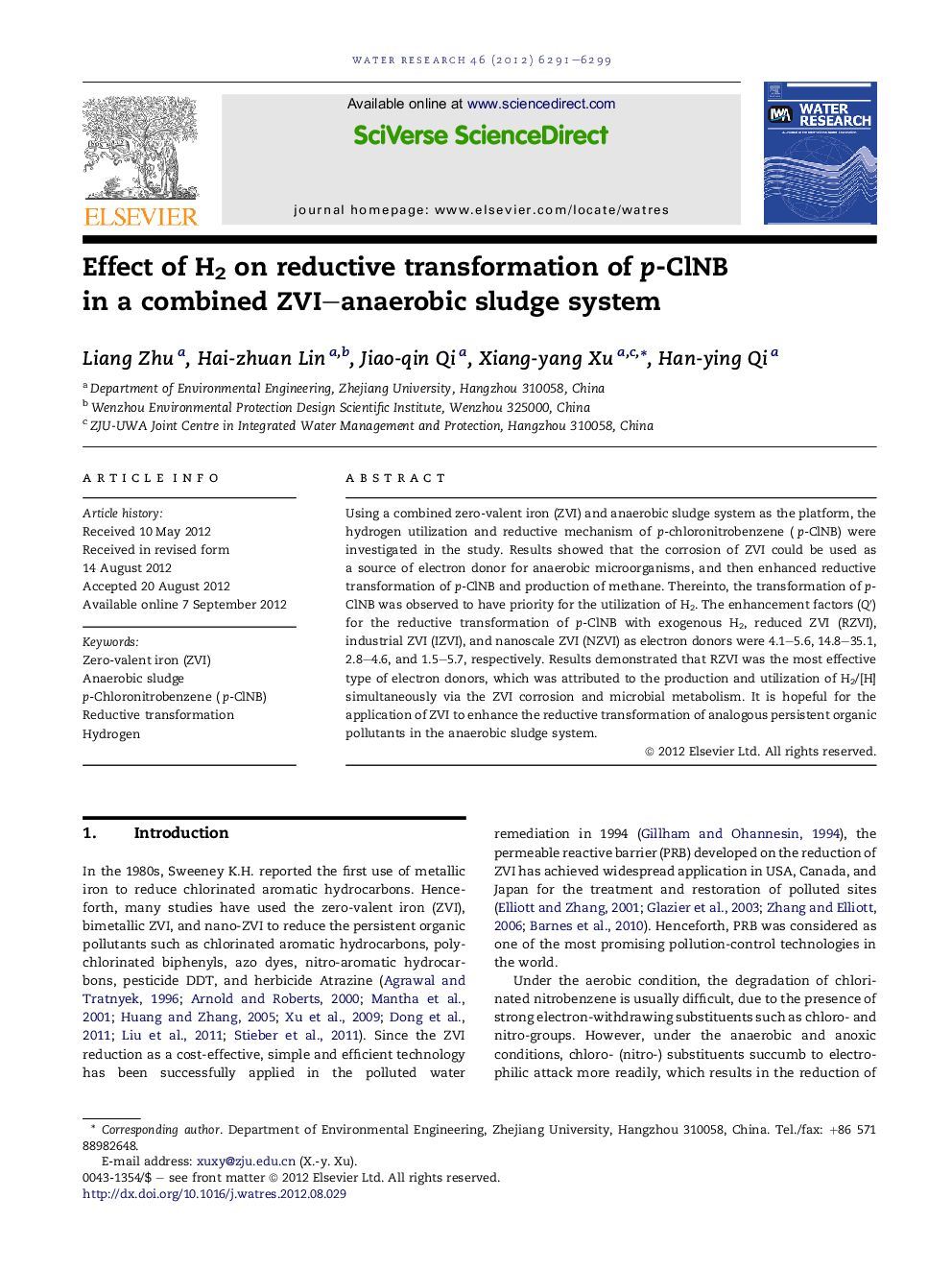| کد مقاله | کد نشریه | سال انتشار | مقاله انگلیسی | نسخه تمام متن |
|---|---|---|---|---|
| 4482445 | 1316859 | 2012 | 9 صفحه PDF | دانلود رایگان |

Using a combined zero-valent iron (ZVI) and anaerobic sludge system as the platform, the hydrogen utilization and reductive mechanism of p-chloronitrobenzene (p-ClNB) were investigated in the study. Results showed that the corrosion of ZVI could be used as a source of electron donor for anaerobic microorganisms, and then enhanced reductive transformation of p-ClNB and production of methane. Thereinto, the transformation of p-ClNB was observed to have priority for the utilization of H2. The enhancement factors (Q′) for the reductive transformation of p-ClNB with exogenous H2, reduced ZVI (RZVI), industrial ZVI (IZVI), and nanoscale ZVI (NZVI) as electron donors were 4.1–5.6, 14.8–35.1, 2.8–4.6, and 1.5–5.7, respectively. Results demonstrated that RZVI was the most effective type of electron donors, which was attributed to the production and utilization of H2/[H] simultaneously via the ZVI corrosion and microbial metabolism. It is hopeful for the application of ZVI to enhance the reductive transformation of analogous persistent organic pollutants in the anaerobic sludge system.
► Hydrogen utilization and reduction of p-ClNB was investigated in anaerobic complex system.
► Corrosion of ZVI can availably provide electron donors for p-ClNB reduction.
► Reductive transformation of p-ClNB was observed to have priority for H2 utilization.
► RZVI was an effective electron donor for production and utilization of H2/[H] simultaneously.
Journal: Water Research - Volume 46, Issue 19, 1 December 2012, Pages 6291–6299